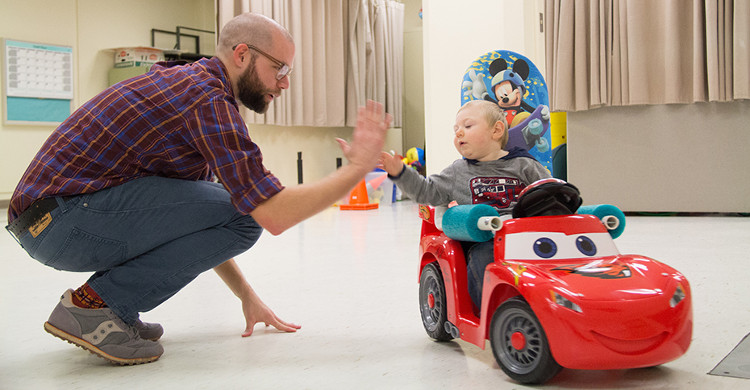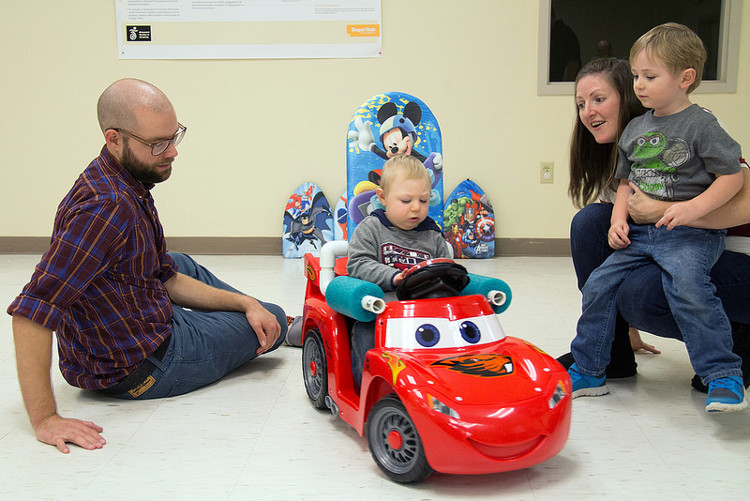Invention of toy cars to support movement in children with disabilities
Researchers at the University of Oregon (OSU) in the US have just completed two new models of innovative toy cars designed specifically for children with disabilities, to encourage them to explore, play and participate in Physical and social activities.
In a statement on May 24, OSU emphasized that by recognizing independent mobility associated with many developmental benefits in young children, USU has developed two program-based designs. " Go Baby Go " , which provides innovative toy car models that can drive for children with disabilities, enabling them to move independently.

This product aims to create physical skills so that children can stand up by themselves, withstand the weight .
Through the first design improvement from the original "Go Baby Go" toy car product, the researchers designed the "stand-up car" to encourage children to stand up so they can activate the kit. conversion parts help the car move.
Essentially, this product aims to create physical skills so that children can stand up, stand up to their weight and maintain their balance, as well as enhance their ability to interact with peers.
Meanwhile, with the second design called "Throw Baby Throw" , using a toy machine to fire water bubbles, the team aims to forge young children with limited ability to dispatch. The movement in the arm can still join the pitching, a basic motor skill, while also helping children easily socialize.

The two cars mentioned above are designed to encourage mobility and social interaction with children with disabilities.
The owner of "Go Baby Go" Sam Logan emphasized that both of the above mentioned models are designed to encourage mobility and social interaction with children with disabilities, two extremely important development skills. important for all young children.
Experts say using these two products is not too costly to help toddlers who are able to overcome mobility problems.
- Invention helps children with disabilities to walk normally
- Students making 'cars' help people with disabilities move freely
- Russia developed neuromobile smart car for people with disabilities
- The world's first successful hand transplant for children
- Electric wheelchairs
- Cars are not steering wheel
- The engineer brings his hands to the disabled children
- Robots with disabilities
- Robot controlled by the eyes of Vietnamese students
- Poor children are the fault of their parents or teachers?
- High-tech prosthetic limbs
- Unique cars can fold neatly
 Green tea cleans teeth better than mouthwash?
Green tea cleans teeth better than mouthwash? Death kiss: This is why you should not let anyone kiss your baby's lips
Death kiss: This is why you should not let anyone kiss your baby's lips What is salmonellosis?
What is salmonellosis? Caution should be exercised when using aloe vera through eating and drinking
Caution should be exercised when using aloe vera through eating and drinking